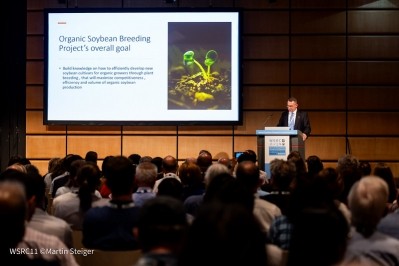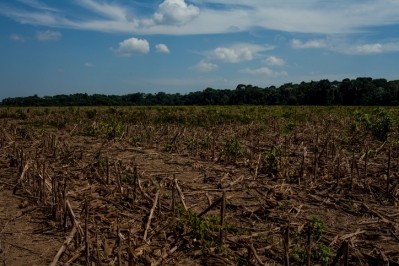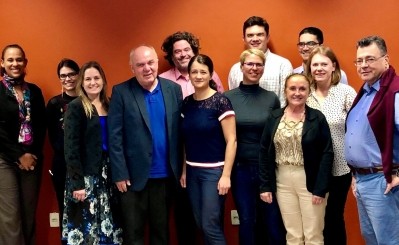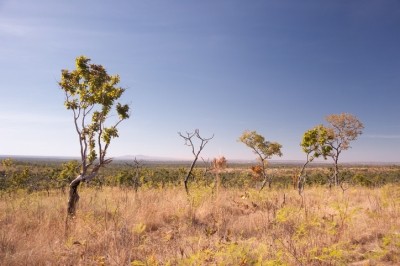Dialogue on deforestation: Constructive meeting of EU and Brazil soy chain partners

The third meeting since the signature of the Memorandum of Understanding (MoU) on a Brazil-EU partnership for sustainable soy took place on 21 November in Brussels.
AproSoja and ABIOVE, groups representing Brazilian soy producers, met with the EU soy chain partners, FEDIOL, FEFAC and sustainable trade initiative, the IDH.
Nathalie Lecocq, director general, FEDIOL, told us the meeting was constructive:
“With several new players in our coalition, we needed first and foremost to get back to a comparable level of understanding and of confidence.
“The meeting allowed us to assess the progress made on the different priorities of our joint undertaking. It allowed our Brazilian partners to get a better sense of the pressure that is mounting with regard to deforestation in Europe. It also showed in Europe the efforts that are underway to improve the sustainability of agricultural production, with a focus on soy.
Finding consensus
She said the parties agreed to commit to establishing a common approach to communication about the work that is being carried out on soy sustainability.
“It is worth noting that we have also conveyed the message to both the Brazilian and European representatives we met over the week, that tackling deforestation requires engagement in a dialogue, which needs to involve stakeholders and governments/national administration alike.
“This is a point we will also be making, in the context of the pending consultations on an EU communication to fight deforestation. We hope this communication will build on the initiatives that are already in place, help enhancing visibility and reinforce the role of dialogue,” said Lecocq.
Challenges addressing different audiences
Alexander Döring, secretary general of FEFAC, weighed in on the communication aspect:
“This is a five party MoU. It is a struggle to move forward a common statement. Moreover, Brazilian audiences are very different from European audiences, so how do you encompass MoU actions that would be readable or intelligible for such different audiences?
“The Brazilian farmers’ perspective [is that] they see themselves as victims of post-colonialism, that Europe is discriminating against Brazilian products, in a way to create new trade barriers and not allow Brazil to move forward.”
The Brazilian partners, he told us, tend to take issue with being lectured by Europe on how to do things when they see their Forest Code as the most extensive, the most detailed and largest conversation program in the world.
“I think there are some real deep-rooted areas of simple incomprehension. It is very difficult to establish a common baseline in terms of the shared analysis and the knowledge base both ways. I think there are clearly important knowledge gaps on our side, which we try to fill in. We try to do our very best to make our Brazilian partners [fully aware] of the European market, and the political context.”
Despite that sensitivity, he said, from FEFAC’s perspective, the MoU meeting was actually better than expected.
He said the trade group is more confident now that the parties will eventually be able to publish a joint communication statement, and a Q&A sheet that would highlight the way forward, that would pinpoint the key facts around the implementation of the Brazil Forest Code (BFC), and that would outline prospects for the more sensitive areas like the Cerrado.
“We are more hopeful, let’s say, after the meeting than before it that we can pull that off.”
Definition difficulties
Adding to the complexity, said Döring, are the multiple definitions of what constitutes deforestation, and approaches needed in the supply chain context:
“How do you measure deforestation?
“What constitutes deforestation when you talk about making use of legal land rights, for example? How do you account for reforestation?
“There are many unresolved issues.
“We don’t feel that we are anywhere near yet a global consensus when discussing how can we convert or translate internationally agreed concepts into an operational supply chain environment.”
Striking a more positive note, Döring said FEFAC sees genuine progress being made on the ground in Brazil in relation to full implementation of the BFC in all the biomes, both as regards farm registrations and on the surveillance side.
Soja Plus benchmarking
The meeting assessed the status of one of the common goals under this partnership, notably the state of progress in relation to the Soja Plus’ benchmarking performed by the International Trade Centre (ITC) in Geneva against the FEFAC Soy Sourcing Guidelines.
“We know the high level of ambition of our partners, especially AproSoja, to bring more farmers and, therefore, acreage within the scope of the Soja Plus program. They have increased their surveillance team, and the number of training workshops offered to farmers.
“A major outcome of our direct meeting was that AproSoja and ABIOVE [and the other organizers] did reconfirm their commitment to submit the additional information required by the ITC to allow them to finalize the benchmarking process.”
The Soja Plus program looks to increase the competitiveness of the soybean industry in Brazil and achieve better sustainability conditions in terms of economic, social and environmental pillars. Once a farmer joins Soja Plus, they begin training on compliance issues so that they can meet Brazilian legislation on environmental and other criteria.
The benchmarking process, according to ITC standards, allows independent verification of soy producers by any third party in the EU seeking such transparency, according to the EU soy chain partners.
Compensation tool
The meeting also looked at approaches for providing Brazil farmers with adequate compensation for providing environmental services that go beyond legal requirements.
“It is a matter of finding a proper financial compensation mechanism so that farmers can forego their land rights for further deforestation. There isn’t one today, but our MoU will continue to search for one.”
Policymakers debriefed
Facilitated by FEFAC and FEDIOL, a delegation containing representatives from the Brazilian government and Senate, AproSoja and ABIOVE also presented their experience of sustainable soy production to the Amsterdam Partnership Group on Deforestation, to Members of the European Parliament and other stakeholders, as well as in bilateral exchanges in Paris and Berlin in the same week.
“The EU has now clearly put soy on the screen as a deforestation risk commodity.
“One of the key announcements during those sessions was that the Commission’s forecast that it will come forward with a deforestation action plan in the form of a communication early next year, perhaps in March 2019.
“That was a surprise. We were not sure that so close to the end of the term of this administration that they would still have the mandate to push for this deforestation action, but this has not been confirmed.
“What we want to ensure now is that we find the proper communication channels so that the EU and Member States will reflect on what our Brazilian partners see as their reality in terms of the enforcement level of the Brazilian Forest Code at national level. We think the EU [officials] are about 10 years behind [in their understanding] about the real situation in Brazil.
“The most compelling numbers that we got from ABIOVE is that the relative contribution of soy to deforestation in the Amazon is less than 2% and in the Cerrrado, less than 7% and falling. They are also fully behind the story that any further expansion of soy in the Cerrado can take place on degraded grasslands only.”
The next meeting of the steering group of the Brazil-EU sustainable soy production will take place in spring 2019 in Brazil, reported the partners.








